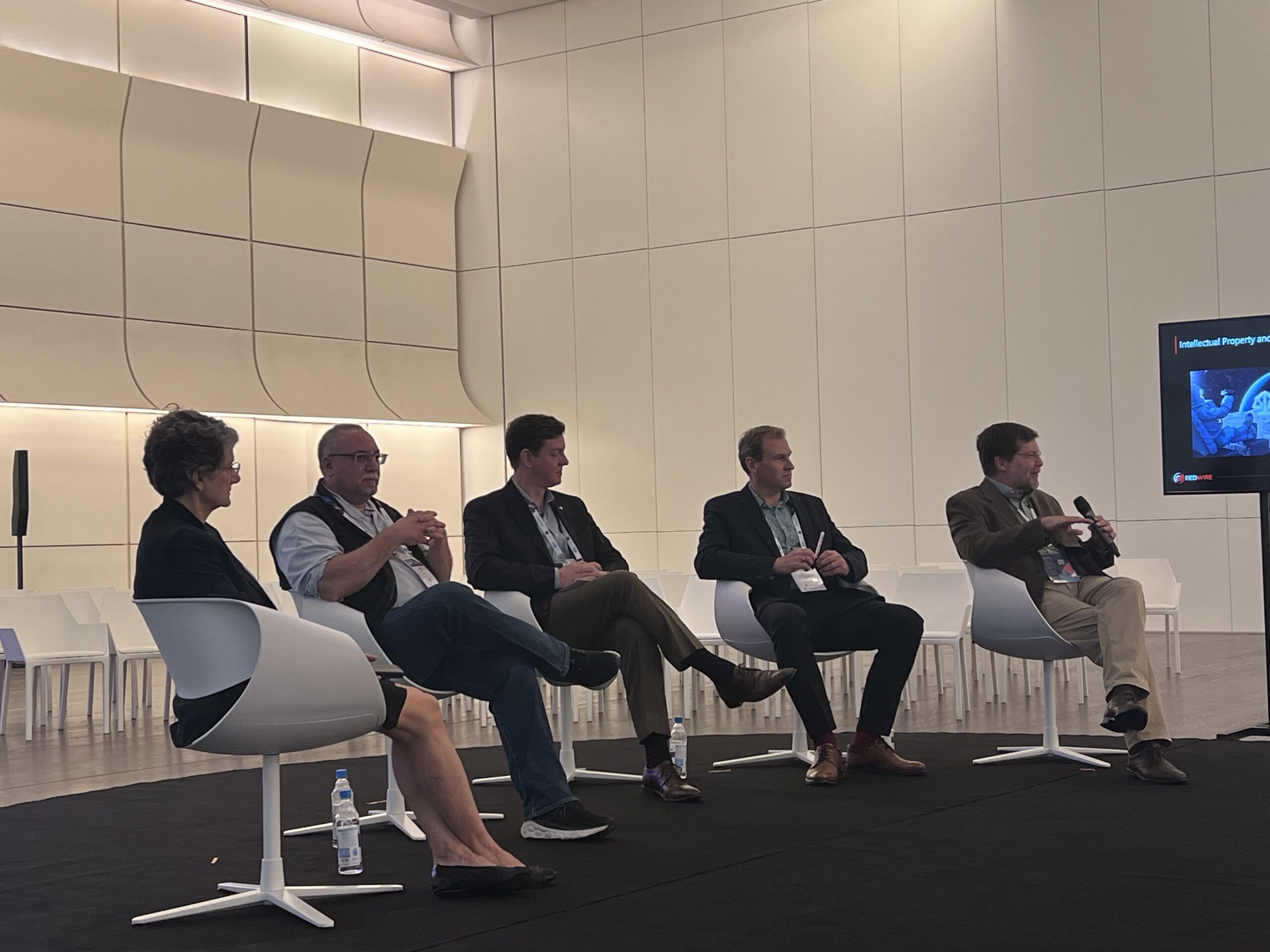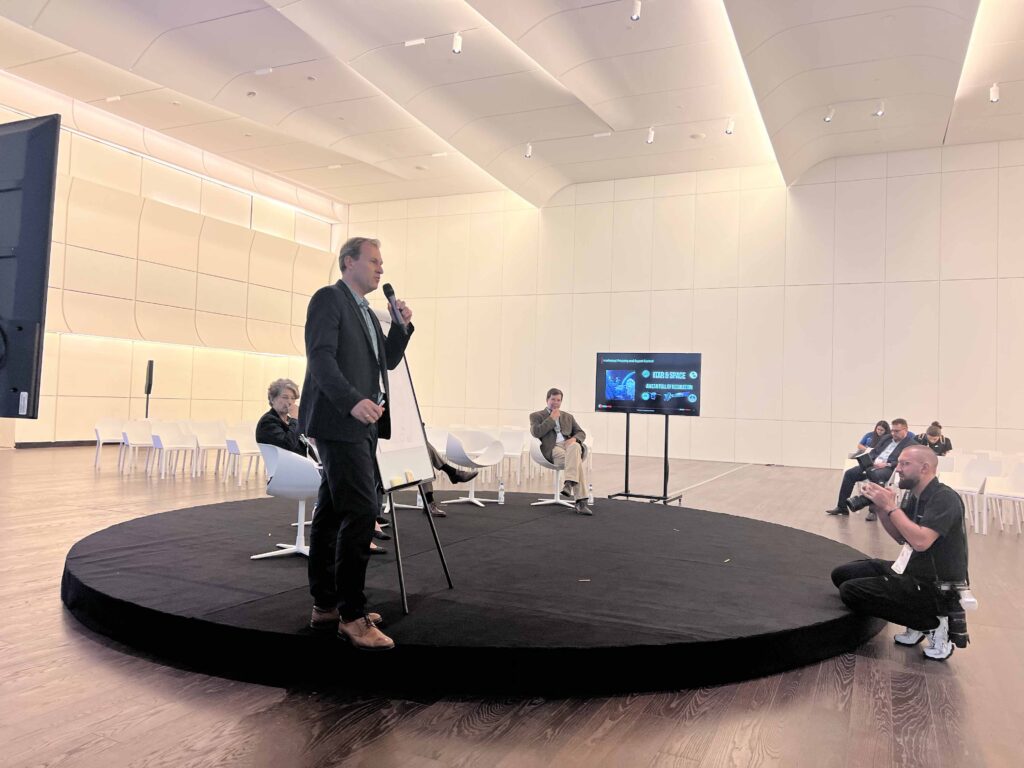by Jessica Rousset and Chase Kassel
The transition from the International Space Station (ISS) to commercial space stations can improve access and experiences for researchers globally. This session discussed the legal, expertise, design, testing, logistical, implementation, and international capacity building challenges from over 20 years of research on the ISS and new opportunities arising from next generation commercial space stations.
Outer Space Treaty Article VI
Barrier: U.S. launch and re-entry requirements for space companies are clear, but the oversight of in-space operations is not.
Opportunity: New commercial stations might leverage best practices of other countries, such as the UAE, Japan and Luxembourg, with clearer continuing supervision regulations.
International Traffic in Arms Regulations (ITAR)
Barrier: U.S. ITAR makes sharing technology with international researchers complicated.
Opportunity: ITAR might be reformed to benefit collaborating parties (e.g., addressing reverse ITAR). Technology Assistance Agreements such as NDAs or more complex ones can overcome these regulations. Also, ITAR may be avoided if commercial platforms don’t claim intellectual property rights from experiments conducted on the station.
Expertise
Barrier: There is a high learning curve for non-space researchers to understand design and implementation requirements and constraints.
Opportunity: Commercial stations may offer additional services from idea conception to experiment parameters and help researchers connect with the right expertise for their experiment.
Experiment Design, Implementation, Iteration
Barrier: Modifying experiments, accessing data and iterating on the science is essential to conducting research, but those opportunities on the ISS are limited by cost and capacity.
Opportunity: Commercial platforms can helpmove beyond one-off experiments by designing for scale and process improvement.
Verification, Testing
Barriers: There are high design and functional requirements needed for experiment verification and testing.
Opportunities: Commercial stations will create new payload user guides, with potential for a step-by-step iterative approach to testing leveraging ground-based facilities where appropriate.
Launch Opportunities
Barriers: Experiments requiring controlled environments often have long lead times for launch.
Opportunities: Commercial stations might accommodate multiple types of launch vehicles approaching and docking and new launch vehicles might enable “launch on demand.”
On Station Services
Barrier: ISS has its own maneuvers, activities, and priorities for astronauts. Experiments need to fit into their schedule.
Opportunity: Concierge services on commercial platforms will serve all customers, not just principal investigators, where customers will select the services and facilities offered on orbit.
Capacity Building
Barrier: Emerging nations have limited access to the ISS due to limited resources and expertise.
Opportunity: Emerging space nations must participate in the innovation enabled by commercial stations for the benefit of the space economy and the global economy. A clearing house or marketplace for providers and emerging nations to collaborate can help accelerate participation.
Conclusion
The ISS helped establish what should be regulated, how a station should operate, and enable experiments. New policies, institutions, hardware and more will emerge to support next generation research on commercial stations. Success will require a coordinated effort of government and commercial-led efforts to understand user needs for making space easier, faster, and cheaper.

